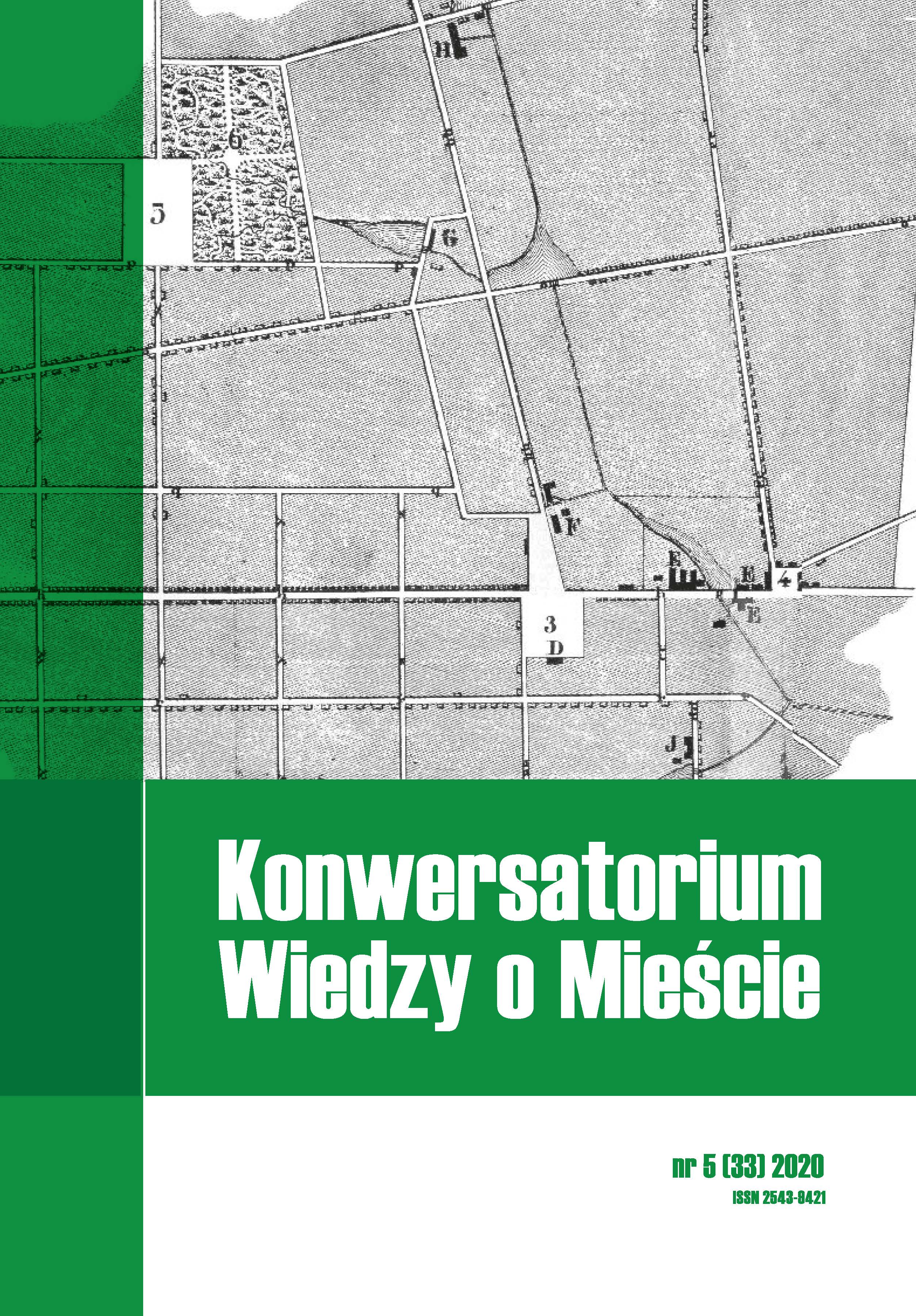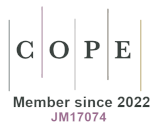Wykorzystanie metod socjologii wizualnej w geograficznych badaniach przestrzeni miejskiej – analiza fotografii wykonanych przez turystów w Łodzi
DOI:
https://doi.org/10.18778/2543-9421.05.10Słowa kluczowe:
analiza fotografii, socjologia wizualna, turystyka, postrzeganie miasta, przestrzeń turystycznaAbstrakt
Celem artykułu jest zaprezentowanie możliwości wykorzystania w badaniach geograficznych jednej z metod socjologii wizualnej – analizy fotografii. W niniejszej pracy analizie poddane zostały wykonane przez turystów zdjęcia, które według nich najlepiej oddawały pobyt w Łodzi. Oprócz typowego dla badań socjologicznych odczytania treści fotografii, znaczeń oraz informacji o autorze, badanie zostało rozbudowane o aspekt przestrzenny, uwzgledniający miejsca wykonania fotografii i ich powiązania m.in. z lokalizacją najpopularniejszych atrakcji turystycznych miasta. W wyniku tej pracy powstała mapa, wyzna- czająca „przestrzeń turystyczną Łodzi” według kryterium wizualnego, która pokazuje jedną z możliwości wykorzystania analiz fotografii w badaniach geograficznych związanych z turystyką. W artykule zaprezentowano, jakie wyniki można otrzymać y zdjęć, wykorzystując cztery różne podejścia i metody interpretacji (strukturalistyczną, hermeneutyczną, semiologiczną oraz geograficzną).
Bibliografia
Barnard, M. (2001). Approaches to understanding visual culture. Houndmills: Palgrave. https://doi.org/10.1007/978-1-137-11046-6
Google Scholar
DOI: https://doi.org/10.1007/978-1-137-11046-6
Barthes, R. (1977). Image, music, text. London: Fontana.
Google Scholar
Barthes, R. (1983). Selected writings. New York: Fontana.
Google Scholar
Bauman, Z. (1978). Hermeneutics and social science. Approaches to understanding. London: Hutchison.
Google Scholar
Becker, H. (1981). Exploring society photographically. Chicago: University of Chicago Press.
Google Scholar
Bogunia-Borowska, M., Sztompka, P. (red.) (2012). Fotospołeczeństwo. Antologia tekstów z socjologii wizualnej. Kraków: Społeczny Instytut Wydawniczy Znak.
Google Scholar
Bourdieu, P. (1990). Photography. A middle brow art. Cambridge: Polity Press.
Google Scholar
Chlebuś-Grudzień, P. (2018). Selfie w muzeum – określenie paradygmatów analizy zjawiska fotografowania się na wystawach muzealnych. Turyzm, 28 (1), 7–13. https://doi.org/10.18778/0867-5856.28.1.01
Google Scholar
DOI: https://doi.org/10.18778/0867-5856.28.1.01
De Choudhury, M., Feldman, M., Amer-Yahia, S., Golbandi, N., Lempel, R., Yu, C. (2010). Automatic construction of travel itineraries using social breadcrumbs. Pobrane z: http://research.microsoft.com/en-us/um/people/munmund/pubs/ht_10_long.pdf (23.10.2020). https://doi.org/10.1145/1810617.1810626
Google Scholar
DOI: https://doi.org/10.1145/1810617.1810626
Duda, M. (2016). Sposób prezentacji oferty turystycznej na przykładzie katalogów wycieczek wybranych touroperatorów. W: J. Leśny, J. Nyćkowiak (red.), Badania i Rozwój Młodych Naukowców w Polsce. Gospodarka i ekonomia (s. 22–29). Poznań: Młodzi Naukowcy.
Google Scholar
Edwards, E. (1997). Beyond the boundary. A consideration of the expressive in photography and anthropology. W: M. Banks, H. Morphy (red.), Rethinking visual anthropology. New Haven: Yale University Press.
Google Scholar
Emmison, M., Smith, Ph. (2000). Researching the visual. London: Sage.
Google Scholar
Feick, R., Robertson, C. (2014). A multi-scale approach to exploring urban places in geotagged photographs. Computers, environment and urban systems, 53, 96–109. https://doi.org/10.1016/j.compenvurbsys.2013.11.006
Google Scholar
DOI: https://doi.org/10.1016/j.compenvurbsys.2013.11.006
Fromm, E. (2003). Mieć czy być. Gdańsk: Dom Wydawniczy REBIS.
Google Scholar
García-Palomares, J.C., Gutierrez, J., Mínguez, C. (2015). Identification of tourist hot spots based on social networks: A comparative analysis of European metropolises using photo-sharing services and GIS. Applied Geography, 63, 408–417. https://doi.org/10.1016/j.apgeog.2015.08.002
Google Scholar
DOI: https://doi.org/10.1016/j.apgeog.2015.08.002
Goffman, E. (1979). Gender advertisements. London: Macmillan.
Google Scholar
Gould, P., White, R. (1974). Mental maps. Progress in Human Geography, 19 (1), 105–110. https://doi.org/10.4324/9780203163757
Google Scholar
DOI: https://doi.org/10.1177/030913259501900110
Henny, L. M. (1986). Theory and practice of visual sociology. Current Sociology, 34 (3), 1–71. https:/doi.org/10.1177/001139286034003003
Google Scholar
DOI: https://doi.org/10.1177/001139286034003003
Hsu, CH., Song, H. (2013). Destination image in travel magazines. A textual and pictorial analysis of Hong Kong and Macau. Journal of Vacation Marketing, 19 (3), 253–268. https://doi.org/10.1177/1356766712473469
Google Scholar
DOI: https://doi.org/10.1177/1356766712473469
Hunter, W.C. (2012). Projected destination image: a visual ana- lysis of Seoul. Tourism Geographies, 14 (3), 419–443. https://doi. org/10.1080/14616688.2011.613407
Google Scholar
DOI: https://doi.org/10.1080/14616688.2011.613407
Jakiel, M., Bernatek, A. (2015). Postrzeganie wybranych typów krajobrazu przez różne grupy kulturowe na przykładzie mieszkańców Krakowa i Stambułu. Prace Komisji Krajobrazu Kulturowego, 29, 93–107.
Google Scholar
Kadar, B., Gede, M. (2014). Where do tourists go? Visualizing and analyzing the spatial distribution of geotagged photography. Cartographica. The International Journal for Geographic Information and Geovisualization, 48 (2), 78–88. https://doi.org/10.3138/carto.48.2.1839
Google Scholar
DOI: https://doi.org/10.3138/carto.48.2.1839
Konecki, K. (2005). Wizualne wyobrażenia. Główne strategie badawcze w socjologii wizualnej a metodologia pracy ugruntowanej. Przegląd Socjologii Jakościowej, 1 (1), 42–63.
Google Scholar
DOI: https://doi.org/10.18778/1733-8069.1.1.04
Kotus, J., Rzeszewski, M. (2015). Zastosowanie „Metod mieszanych” do badania zachowań turystów w mieście – przykład konceptualizacji i wykorzystania (artykuł dyskusyjny). Turyzm, 25 (1), 57–67. https://doi.org/10.2478/tour-2014-0020
Google Scholar
DOI: https://doi.org/10.2478/tour-2014-0020
Kurashima, T., Iwata, T., Irie, G., Fujimura, K. (2013). Travel route recommendation using geotagged photos. Knowledge and information systems, 37 (1), 37–60. https://doi.org/10.1007/s10115-012-0580-z
Google Scholar
DOI: https://doi.org/10.1007/s10115-012-0580-z
Leon, S. (2017). The semiotics of photography: Towards objective hermeneutics. Philosophy Study, 7 (12), 634–644. https://doi. org/10.17265/2159-5313/2017.12.002
Google Scholar
DOI: https://doi.org/10.17265/2159-5313/2017.12.002
Li, X. (2013). Multi-day and multi-stay travel planning using geo-tagged photos. W: D. Pfoser, A. Voisard (red.), Proceedings of the second ACM SIGSPATIAL international workshop on crowdsourced and volunteered geographic information (s. 1–8). New York: Association for Computing Machinery. http://doi.org/10.1145/2534732.2534733
Google Scholar
DOI: https://doi.org/10.1145/2534732.2534733
Lynch, K. (1960). The Image of the city. Cambridge: MIT Press.
Google Scholar
MacCannell, D. (2011). The ethics of sightseeing. London: University of California Press. https://doi.org/10.1525/9780520948655
Google Scholar
DOI: https://doi.org/10.1525/9780520948655
Magala, S. (2000). Szkoła widzenia. Wrocław: Biblioteka Formatu.
Google Scholar
Milman, A. (2011). The symbolic role of postcards in representing a destination image: the case of Alanya, Turkey. International Journal of Hospitality & Tourism Administration, 12 (2), 144–173. https://doi.org/10.1080/15256480.2011.564495
Google Scholar
DOI: https://doi.org/10.1080/15256480.2011.564495
Mirowska, N., Krysiak, S. (2015). Atrakcyjność wizualna krajobrazu doliny Mrogi i jej sąsiedztwa w gminie Dmosin. Acta Universitatis Lodziensis, Folia Geographica Physica, 14, 25–35. https://doi.org/10.18778/1427-9711.14.03
Google Scholar
DOI: https://doi.org/10.18778/1427-9711.14.03
Mirzoeff, N. (1999). An introduction to visual culture. London: Routledge.
Google Scholar
Peirce, Ch. (1955). Philosophical writings of Peirce. New York: Dover Publications.
Google Scholar
Picazo, P., Moreno-Gil, S. (2019). Analysis of the projected image of tourism destinations on photographs: A literature review to prepare for the future. Journal of Vacation Marketing, 25 (1), 3–24. https://doi.org/10.1177/1356766717736350
Google Scholar
DOI: https://doi.org/10.1177/1356766717736350
Podhorecka, K. (2016). Ocena atrakcyjności wizualnej krajobrazu wybranych obszarów Polski. Turyzm, 26 (2), 33–38. https://doi. org/10.18778/0867-5856.26.2.04
Google Scholar
DOI: https://doi.org/10.18778/0867-5856.26.2.04
Prosser, J., Schwartz, D. (1998). Photographs within the sociological research process. W: J. Prosser (red.), Image-based Research (s. 101–115). London: Routledge.
Google Scholar
Puttilli, M. (2020). Everyday geographies in the changing city: subjective photo-routes in Mandalay, Myanmar. GeoJournal, 2020, 1–20. https://doi.org/10.1007/s10708-020-10263-8
Google Scholar
DOI: https://doi.org/10.1007/s10708-020-10263-8
de Saussure, F. (2002). Kurs językoznawstwa ogólnego. Warszawa: Wydawnictwo Naukowe PWN.
Google Scholar
Shoval, N., Isaacson, M. (2010). Tourist mobility and advanced tracking technologies. London: Routledge. https://doi.org/10.4324/9780203869376
Google Scholar
DOI: https://doi.org/10.4324/9780203869376
Smith, M. (2003). Issues in cultural tourism studies. London: Routledge. https://doi.org/10.4324/9780203402825
Google Scholar
DOI: https://doi.org/10.4324/9780203402825
Sontag, S. (1978). On photography. New York: Farrar, Strauss and Giroux.
Google Scholar
Stepchenkova, S., Zhan, F. (2013). Visual destination images of Peru: comparative content analysis of DMO and user-gene- rated photography. Tourism Management, 36, 590–601. https://doi.org/10.1016/j.tourman.2012.08.006
Google Scholar
DOI: https://doi.org/10.1016/j.tourman.2012.08.006
Strategia rozwoju Łodzi 2020+ (2013). Pobrane z: https://uml.lodz.pl/files/public/dla_mieszkanca/architektura_i_urbanistyka/publikacje/STRATEGIA__druk_24.07bez_markerow.pdf (23.10.2020).
Google Scholar
Suchar, Ch. (1989). The sociological imagination and documentary still photography. The interrogatory stance. W: R.B. Flaes (red.), Eyes across the water. The Amsterdam conference on visual anthropology and sociology (s. 51–63). Amsterdam: Het Spinhuis. https://doi.org/10.1080/14725868908583637
Google Scholar
DOI: https://doi.org/10.1080/14725868908583637
Sztompka, P. (2005). Socjologia wizualna. Fotografia jako metoda badawcza. Warszawa: Wydawnictwo Naukowe PWN.
Google Scholar
Tammet, T., Luberg, A., Jaarv, P. (2013). Sightsmap: crowd-sourced popularity of the world places. W: L. Cantoni, Z.P. Xiang (red.), Information and communication technologies in tourism 2013 (s. 314–325). Berlin–Heidelberg: Springer. https://doi.org/10.1007/978-3-642-36309-2_27
Google Scholar
DOI: https://doi.org/10.1007/978-3-642-36309-2_27
Trasher, F.M. (1927). The gang. Chicago: Chicago University Press.
Google Scholar
Tripadvisor (2020). Pobrane z: https://pl.tripadvisor.com/Attractions-g274837-Activities-a_allAttractions.true-Lodz_Lodz_Province_Central_Poland.html (23.10.2020).
Google Scholar
Wieczorkiewicz, A. (2012). Apetyt turysty – o doświadczaniu świata w podróży. Kraków: Universitas.
Google Scholar
Pobrania
Opublikowane
Jak cytować
Numer
Dział
Licencja

Utwór dostępny jest na licencji Creative Commons Uznanie autorstwa – Użycie niekomercyjne – Bez utworów zależnych 4.0 Międzynarodowe.









